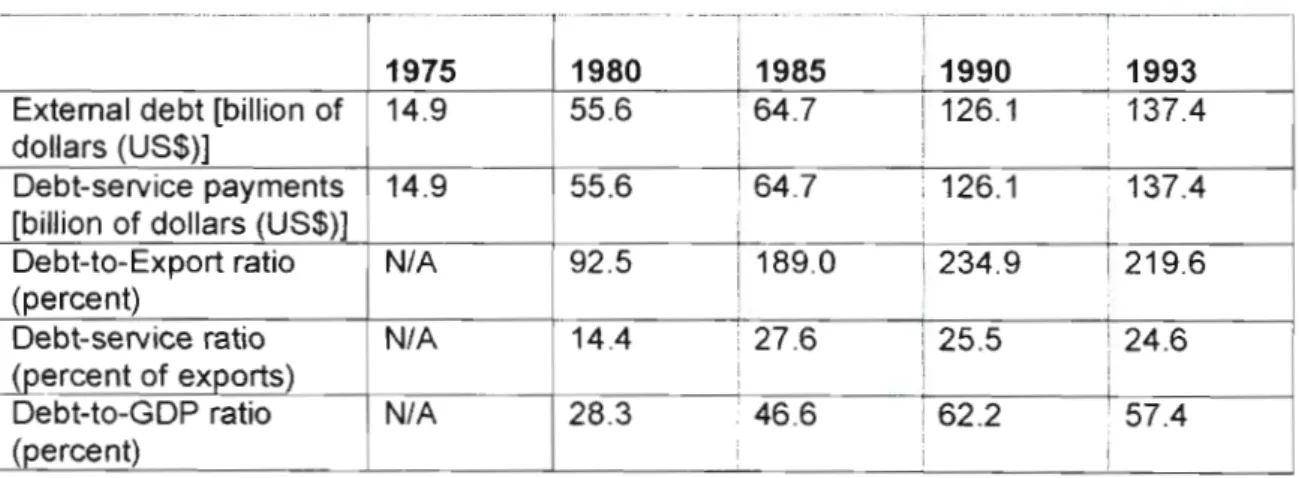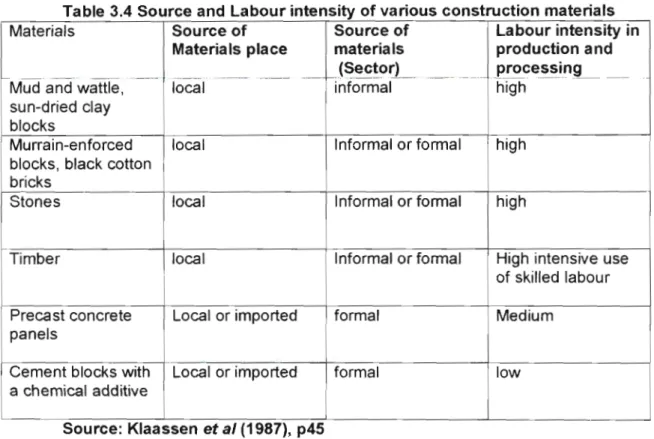The study examines the hypothesis of the effects of ESAP on the contribution of the construction sector to national development in relation to shelter development. What effects did ESAP have on the construction sector's contribution to overall national development with regard to shelter development?
Study research method
Resources (time, financial and human) were not sufficient to cover both sides of the market. In establishing the aims and objectives of the study, an assessment of the effects of the Economic Structural Adjustment Program in relation to the Shelter Development Strategy on the contribution of the construction industry and Zimbabwe's national development status was necessary.
CHAPTER TWO
RESEARCH METHODOLOGY
Sampling Procedure for Survey Respondents 14
It is important to note that the choice of the research method to be used depends solely on the research questions asked in the. A copy of the survey questions is attached, as appendices at the end of this thesis.
Summary
CHAPTER TWO
LITERATURE REVIEW
Introduction
The Shelter and Development paradigm within the context of the construction industry has taken various twists and turns over the past five decades1. What Habitat 11 conference did was to reaffirm, integrate and consolidate previous international and isolated conference resolutions containing possible shelter and development strategies.
Contemporary Third World Development Problems
Although the problems of rapid urbanization are still well known, there is now growing recognition that Third World urbanization presents its own unique economic contributions to the region's affected economies. The tracked contemporary problems in the Third World would also influence Zimbabwe's decision to adopt the Bretton Woods "prescription" of the Economic Structural Adjustment Program (ESAP).
Third World Debt Crisis
To balance their accounts, most sub-Saharan countries made use of excess loans from both commercial banks and the IFI (Tadaro 1994,). With most of their resources devoted to debt service and repayment, most sub-Saharan countries have turned to deficit financing with the attendant consequence of high inflation and the persistence of debt3 (Sparr, 1994).
The Role of the International Financial Institutions
On the other hand, the World Bank is engaged in a program of economic structural adjustment (Sinha, 1994). After successfully helping developed countries rebuild their countries after the destruction of World War II, these two institutions are now focused on using their expertise to help Third World countries achieve a similar status.
The Economic Structural Adjustment Programme (ESAP)
Consequently, the protagonist of the Economic Structural Adjustment Program argued that the investment in shelter would stimulate the construction industry, which in turn would contribute to national development (Woodfield, 1989). The role of the Government in the housing market and construction industry should be reduced: from direct participation to the operation of the regulatory framework and the relief of the supply markets (empowerment).
The Construction industry in Sub-5aharan Africa and its Role in National Development
Edmonds and Miles (1984) and UNCHS (1996) have further argued that the importance of the construction industry in any The structure of the construction industry in sub-Saharan Africa is very varied and tends to vary from country to country.
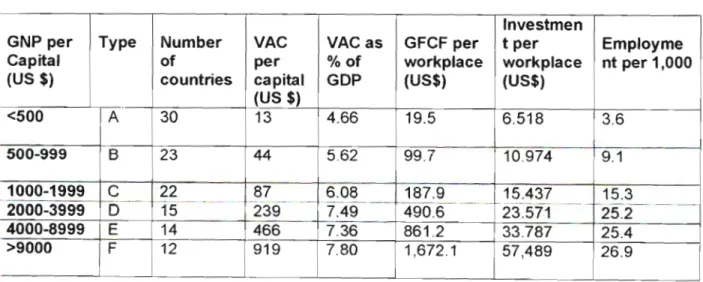
Construction Supply
The Informal Sector Construction Industry
Integration of institutional arrangements in the informal construction sector with the overall construction sector planning apparatus. Designing a central agency that coordinates activities in the informal sector and sets broad policy guidelines.

The Construction Industry and Housing Provision
Strengthening the capacities of existing institutions or associations in the information, training and basic administration practices. Including Zimbabwe will mean trying to redefine the "thin line" between the formal and informal construction sectors.
Housing (Shelter), the Construction Industry and Development Paradigms
Social Housing and the Welfare State System
Although housing was never explicitly mentioned as a means of meeting the stated national development goals, it was implicitly seen as a medium to increase productivity among the "well" housed workers and those engaged in the construction industry (Mashamba, 1997). Due to the large number of people in need of housing and other building products, rapid industrialization of the construction industry was considered the key to meeting the set national development goals.
Rapid Industrialisation
Overall national development policies tended to follow what has become known as "redistribution with growth and basic needs". Conventional housing became expensive and beyond the reach of ordinary city dwellers, so most resorted to building and living in the so-called squatter settlements that they built using traditional methods and materials (Wells.
High Housing Standards
This phenomenon was that land is still a challenge for the Zimbabwean construction sector and the government as a 'supporter' (e.g. architects and engineers).
Housing Subsidies and Allowances
A notable contribution of the World Bank to Turner's ideas on self-help was the inclusion of economic sustainability in the self-help housing program. Marcuse (1992) has argued point by point against conventional self-help housing advocated by the Turner school.
Reduced Housing and Infrastructure Standards
In summary, Marcuse (1992) rejects the idea that self-help housing can make a significant contribution to national economic development and the economic redistribution of wealth. The inclusion of the principle of full cost recovery in the World Bank's self-help housing program marked the beginning of the end of social housing and the welfare state system.
The Shelter Development Strategy and Its Linkages to the Construction Industry
It is also true that some countries are pursuing the shelter development strategy without necessarily having economic structural adjustment loan agreements. Looking at the key aspects of the Economic Structural Adjustment Program and the supporting Shelter Development Strategy mentioned above, the two show a striking relationship.
Employment creation
Another practical example is from the city of Bulawayo, Zimbabwe, where the city council was involved in training high school graduates in construction skills and helping them set up small construction cooperatives (10-12 members). This leads to the question of whether foreign financial assistance is a prerequisite for the initial establishment of these small businesses.
Forward and Backward Linkages
The neo-Marxist school argues that the Economic Structural Adjustment Program and related programs such as the Enabling Housing Development Strategy are designed to perpetuate underdevelopment in the Third World and they have reason to (Todoro, 1994). However, its greatest weakness has been its failure to provide an alternative model to the crippling Third World debt and economic structural adjustment program that resulted and enabled the shelter development strategy.
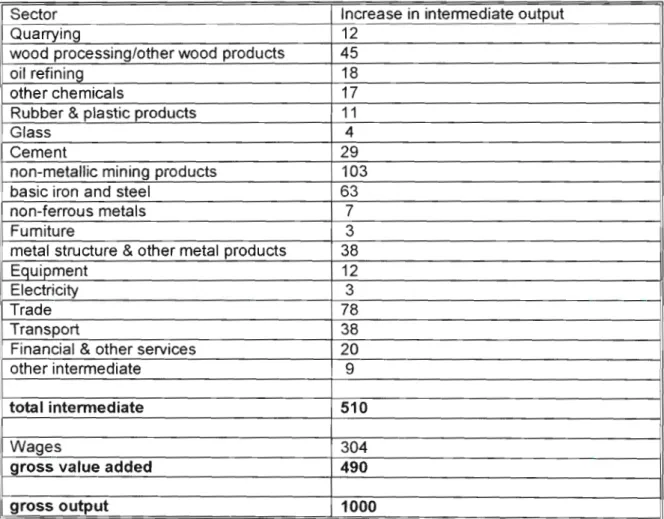
The Moderates (or Liberals)
They concluded that it was not so much the operational apparatus that mattered, but the state of the economy in the success of the housing provision. This chapter outlined the origins and context of the current global phenomenon of the Economic Structural Adjustment Program and the facilitating Shelter.
CHAPTER FOUR
ZIMBABWE BACKGROUND
- Introduction
- Political Factors 4.2.1 Colonial Legacy
- Policy at independence
- Economic Factors
- Pre-ESAP Economic Policies-Post-Independence
- Social Factors 4.4.1 Rapid Urbanisation
- Pre-Independence Housing Policies
- Socialist Housing Policy of the 1980s
- Homeownership and Restrictions on Rent
- Three Strategies of Housing Production
- Transformation of Housing Policies from 1980 to 1990
- Squatter And Upgrading Of Sub-Standard Areas 4.8.1 The Demolition Policy
- Upgrading Of Epworth
- New Township: The Kuwadzana Project
- Failure by Local Authorities
- Summary
- CHAPTER FIVE
The policy was to regulate the flow of male migrants based on the availability of employment and to prevent the accumulation of unemployed poor people in the city. The men had to work in the city for a number of years and then return to their families on the reservations. Only with the intensification of the liberation did the implementation of inflow control fail. The existing residential areas became severely overcrowded and several squatter settlements emerged.
ENABLEMENT ENVIRONMENT CREATED
- The Fiscal Policy
- The Financial Services and Shelter provision
- Housing Demand Review and Assessment
- Housing Cooperatives
- Infrastructure Rehabilitation
- Impact of Planning and Building regulations on the construction industry
- Partnership with International Organizational
- Land Delivery
- Summary
- CHAPTER SIX
In terms of mortgage financing, a fourth building society started operations after the liberalization of the financial sector (Zimbabwe, 1997). The intention of the study is to look for the effects that the policy had on the shelter provision.

FINANCING AND CONSTRUCTION INVESTMENT UNDER ADJUSTMENT CONDITIONALITIES
Investment opportunities in the construction industry
The capital and financial markets are seen as catalysts and engines for the growth of the construction sector. Investors mainly choose the construction sector because of the background specialization that players in this sector already possess.
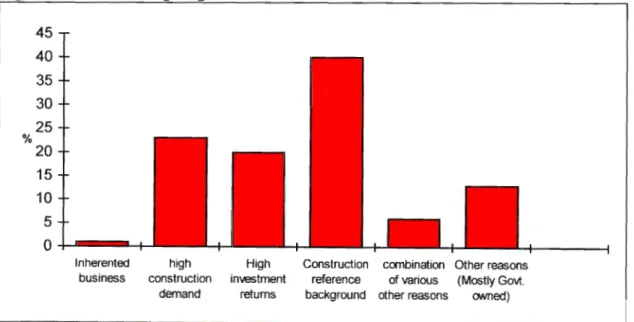
Dimensioning and Projection the Housing Problem in Zimbabwe Zimbabwe's urban housing deficit in 1992 was pegged at about 700 000 units
All countries, both developing and developed, subsidize housing to give low-income groups access to it. The National Housing Fund - to provide housing subsidies and guarantees to low-income people looking for a mortgage.
Financial Constraints to Housing Provision
Housing subsidies are an unavoidable necessity in a country like Zimbabwe, where 60% of the population earns an income below the poverty line (Ministry of Public Service, Labor and Social Welfare (MPSLSW, 1996). USAID Interest Subsidy - the government's initiative with NGOs to help alleviate housing problems for the low-income group.
The Marco Economic Imperatives
Low levels of consumer education have increased misunderstanding of the development and housing issues and the number of unscrupulous operators in the housing environment. This is one of the challenges to the shelter provision in Zimbabwe that the government must address to arrest the situation of an orphan.
Impact of Inflation on Living Standards and Construction Costs
- Construction Worker Profile
Food accounts for a larger portion of the budget of low-income households than the average higher-income household. Causality tends to run the other way: when demand for construction (driven by high investment in the economy) is high, the price of construction rises relative to other prices (ie the real price rises in Figure 6.5).
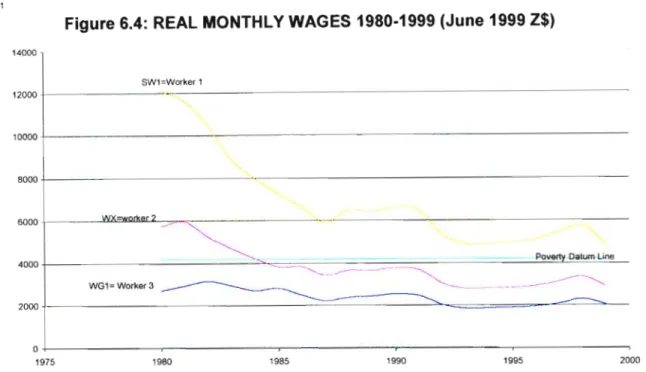
Summary
Another remarkable feature of the construction market in Zimbabwe, particularly the public sector; is its reliance on donor funding even as past experience has shown that this tendency leaves the industry vulnerable to international politics, vis-à-vis human rights and Zimbabwe's governance record with the international community. The labor intensity of the four sectors of the construction industry vis-à-vis housing is discussed in Chapter 7.
CHAPTER SEVEN
CONSTRUCTION INDUSTRY RESULTANT LABOUR AND INCOME LEVELS
Introduction
The role of labor in national development is well known in both the ESAP and the Shelter Development strategy. Despite the moral, social and political issues raised above, this chapter endeavors to assess and focus more on the net effect of the economic structural adjustment program on the provision of shelter, in terms of creating employment and increasing national income in industry for shelters and the rest of the industry. economy.
New labour reforms
It is fair to say that the non-implementation of these policies and measures in the informal sector is not deliberate on the part of the government. Despite state intervention in the labor market, the Zimbabwean government believed in leaving day-to-day labor matters to employers and employees.
The changing labour environment in the Construction industry
Unfortunately, the above postulated benefits have not yet been seen in the construction industry compared to housing and the rest of the economy. During the ESAP period, employment grew faster in the construction industry than in any industry in the economy.
Labour Fluctuations in the three cities
Otherwise, the failure of the informal sector to adequately service the sheltering industry as the formal sector shrinks will lead to increased construction imports or material shortages in the country. The effect was the suspension of major capital projects in the area pending the final sale of the industry.
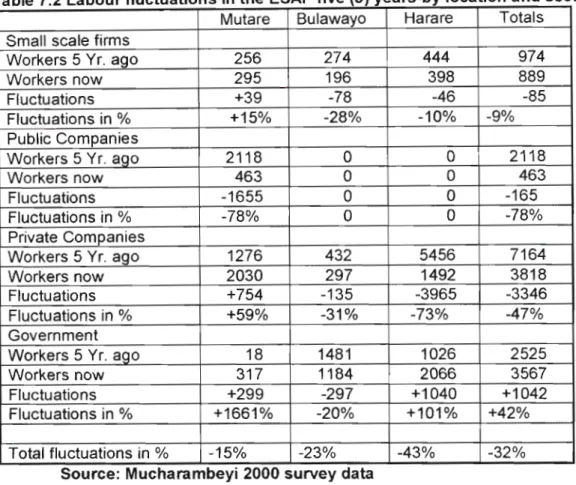
Labour fluctuations by size of company
Finally, this part of the study looks at the labor force fluctuations that have occurred in the shelter construction industry by sector, viz. The discussion does not paint a very clear picture of the workforce in the industry.

Construction skills and training
Skilled labour and formal training
It is difficult to explain this xenophobia towards immigrants given the global economic order and the drive for foreign investment in Zimbabwe's construction industry. It can be said that the success of the job creation exercise in the shelter construction industry depends on the ability of the industry to use more labor intensive construction techniques.

Income and Earnings
The explosive growth of the informal construction sector has not helped matters as both workers and employers are not registered with the organization. There is now an increasing tendency in the private sector to base employee earnings on labor productivity and company profitability.
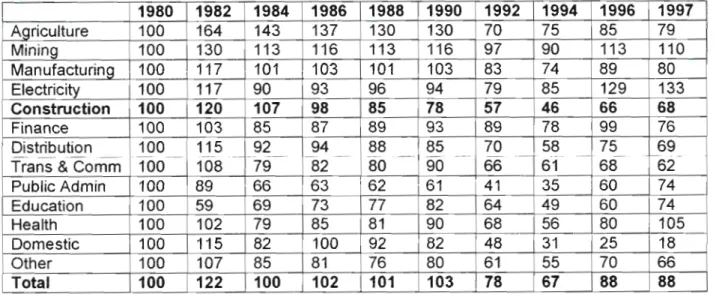
Summary
Low capital investment by the government and the private sector in construction, resulting in low demand for construction. The constant fear of being fired from the public sector has also contributed to low morale in the public sector.
CHAPTER EIGHT
RESPONSIVENESS OF CONSTRUCTION SUPPLY TO ADJUSTMENT AND ENABLEMET
CONDITIONALITES
Introduction
From chapters four to six, we examined various supportive policies and measures that the Zimbabwean government pursued in an effort to boost the construction sector relative to shelter, and ultimately the rest of the national economy. This chapter aims to identify the net effects that these unrelated neoliberal legislation and measures had on the shelter supply side of the construction sector.
Resultant (construction) supply levels in the industry
Although this finding does not explicitly tell us that very little maintenance and repairs have been carried out to existing infrastructure, it does give us an indication of the nature of progress in the construction market in relation to new works and maintenance/repairs. They have been largely sponsored and executed by donor countries on behalf of the Zimbabwean government and have dominated the Zimbabwean civil engineering sectors in the construction industry for the last five years of ESAP.

Construction materials
Civil works: This part of the study is based on the road and water sector's rehabilitation programs in connection with shelter. For example, Bituminous Products of Trinidad and Circle Cement are some of the local companies that have benefited from the road rehabilitation exercise.
Output, price and supply
- Cement
- Aggregates (Crushed stones and building Iriver sand)
- Roofing sheets
- Steel
The issue of liability for defective products plays a major role in the informal sector. Undoubtedly, prices can fall if there is transfer of technology and development in the hands of the informal sector.
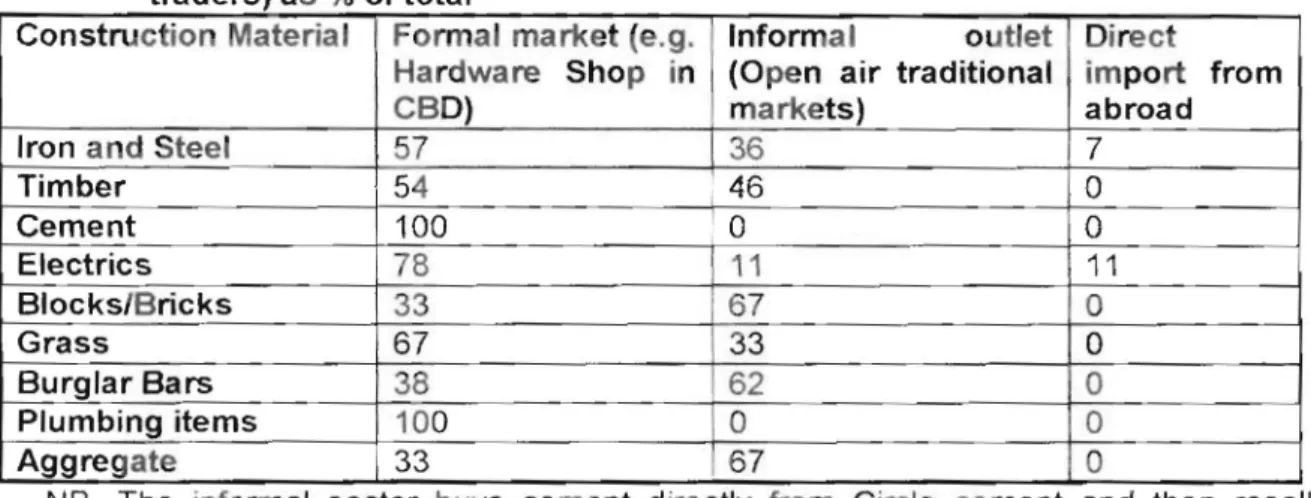
Stimulating construction exports
The opening of the Southern African market also brings a greater and richer customer service. This is due to the low percentage of companies that intend to expand into the export business.
Summary
CHAPTER NINE
SUMMARY AND CONCLUSION
The study summarizes the situation in the shelter construction industry under the application of neoliberal strategies. The hypothesis - the answer and the validation of this thesis lies in it. The study successfully investigated the research topic in light of the research findings.
